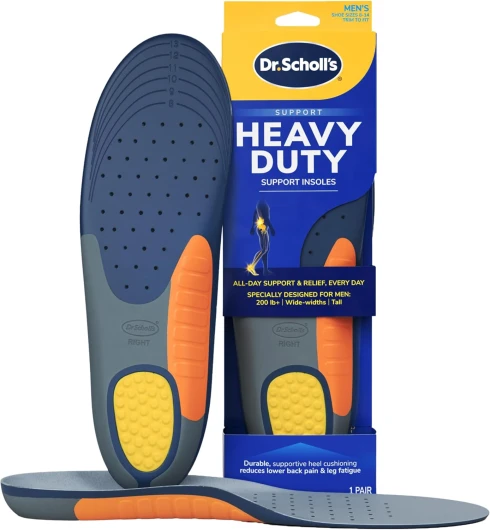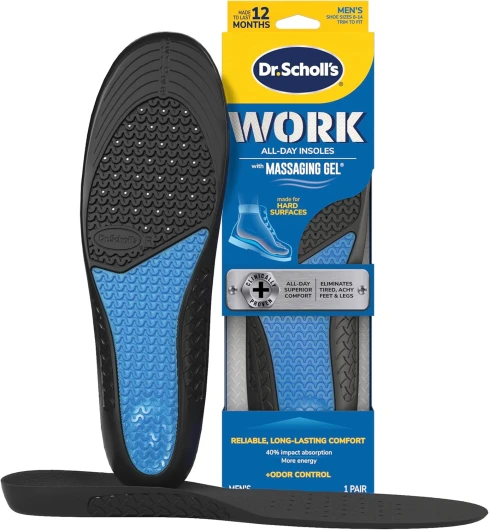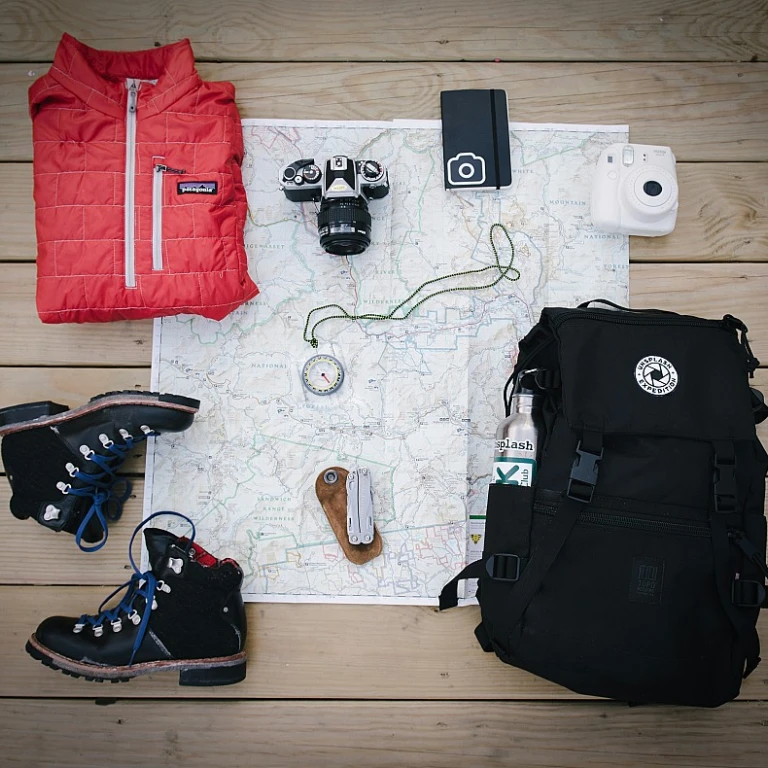
Understanding the Role of Insoles in Hiking Boots
The Impact of Insoles on Hiking Performance
Insoles play a crucial role in hiking boots, offering much-needed comfort and functionality for outdoor enthusiasts. While the idea of slipping into a pair of work boots and venturing out seems straightforward, it's the hidden components inside that truly make a difference. Among these, insoles are perhaps the unsung heroes that drastically enhance your hiking experience. For those tackling uneven trails and rugged terrains, the right insoles can offer substantial support to the entire foot, starting from the arch to the heel. An optimal insole ensures correct arch support, aligning your feet perfectly, which reduces the risk of flat feet complications and plantar fasciitis. Moreover, they provide necessary cushioning that curtails the grueling heel pain caused by prolonged walks. More than just comfort, insoles also contribute to foot stability. Hiking through challenging paths requires added support to prevent slips and injuries. By offering additional grip and absorbing shocks throughout the day, insoles can help prevent foot pain and fatigue—often overlooked aspects by many. Among the array of orthotic insoles available, custom orthotics serve as an excellent choice for addressing specific foot issues. Ideal for those suffering from plantar fasciitis or requiring a neutral arch fit, these orthotics are tailor-made to the individual's needs. Choosing the right footwear for hiking can positively transform your outdoor endeavors. The integration of orthotic insoles not only maximizes comfort but also boosts overall performance, giving you an edge on the trails. Ultimately, investing in top-quality insoles can be key to an enjoyable and pain-free hiking adventure.Challenges Faced by Outdoor Enthusiasts
Overcoming Common Obstacles on the Trail
Outdoor enthusiasts often face a variety of challenges when it comes to maintaining comfort and performance during their adventures. One of the most prevalent issues is foot pain, which can be exacerbated by inadequate support from hiking boots. This is where the importance of insoles comes into play, offering much-needed relief and stability.
Many hikers experience heel pain or discomfort due to plantar fasciitis, a common condition that can be alleviated with the right shoe insoles. Custom orthotics or support insoles designed specifically for hiking can provide the necessary arch support, reducing strain on the feet and enhancing overall comfort.
Another challenge is dealing with flat feet, which can lead to increased fatigue and discomfort over the course of a long day on the trail. Boot insoles with a neutral arch can help distribute weight more evenly, preventing excessive pressure on any one part of the foot.
Price is also a consideration for many outdoor enthusiasts. While custom orthotics can be expensive, there are more affordable options available that still offer significant benefits. It's important to weigh the unit price against the potential for pain relief and improved performance.
For those seeking to enhance their hiking experience, exploring the benefits of shoe inserts for supination can be a game-changer. These specialized insoles work to correct foot alignment, providing better support and reducing the risk of injury.
Ultimately, selecting the right insoles for your hiking boots can make a significant difference in overcoming the challenges faced by outdoor enthusiasts. By addressing issues such as foot pain, arch support, and heel discomfort, insoles can transform your hiking experience, allowing you to focus on the adventure ahead.
Types of Insoles for Work Boots
Exploring Different Varieties of Work Insoles
When it comes to enhancing comfort and performance in hiking boots, especially for outdoor enthusiasts who face challenging terrains all day, selecting the right work insoles is crucial. They contribute significantly to alleviating heel pain and preventing foot pain.
Among the types of insoles available, the choice ranges based on needs:
- Support Insoles: These are perfect for those seeking arch support and stability. Ideal for flat feet or those needing additional orthotic support.
- Orthotic Insoles: Custom orthotics can be tailored to address specific pain points, such as plantar fasciitis, providing optimal support and pain relief. Consider them an investment, as their unit price might be higher, but the long-term benefits are substantial.
- Shoe Inserts for Heel and Arch Pain: Specifically designed to target heel and arch pain, these insoles cater to men and women, offering a neutral arch and suitable for work boots.
It's essential to evaluate your specific requirements before making a purchase. Some insoles are designed for particular issues, while others, like top support orthotic insoles, provide a broad range of advantages. Consulting with a specialist can often better tailor your needs with the best insole type.
Ultimately, whether you're tackling rocky paths or exploring new trails, the combination of the right insoles and work boots ensures your outdoor experience remains comfortable and satisfying without the discomfort of foot issues.
Selecting the Right Insole for Your Needs
Choosing the Perfect Insole for Optimum Support
Selecting the ideal insole can significantly improve your hiking boot experience, providing much-needed support and alleviating common foot issues like arch and heel pain. Here's what to consider when choosing the right insole for your specific needs:- Foot Type and Arch Support: Understanding your foot type is crucial. Those with flat feet often benefit from insoles with strong arch support, while a neutral arch or high arch may require different support orthotic options for balance.
- Specific Foot Conditions: For those suffering from plantar fasciitis or heel pain, orthotic insoles designed for pain relief can be particularly beneficial. Custom orthotics can be an excellent choice if you need a tailored solution to address severe foot pain.
- Material and Cushioning: The material of the insole affects comfort levels. Look for high-quality cushioning materials that offer shock absorption, which is crucial for those spending long hours on their feet each day.
- Work Environment: If your activities involve a lot of standing or demanding terrain, consider insoles specifically designed for work boots. These typically have enhanced durability and support features.
- Budget Considerations: Insoles are available at varying price points. It's important to consider the unit price in relation to the features offered, ensuring you get a balance of quality and cost-effectiveness.
Maintaining and Replacing Insoles
Ensuring Longevity and Efficacy of Your Insoles
To maintain optimal comfort and support from your work boot insoles, regular maintenance is essential. Over time, even the highest quality insoles can wear down, especially if they are constantly bearing your body weight and absorbing shock as you navigate assorted terrains on a hiking trip.
Here are some helpful tips to help you prolong the life and effectiveness of your insoles:
- Regular Cleaning: Just like your shoes, insoles can accumulate dirt and odor. Consider removing them periodically and cleaning with warm water and mild soap. Allow them to air dry completely before placing them back in your boots to prevent mold and mildew.
- Monitor for Wear and Tear: Pay attention to signs of wear such as flattened arch support, compressed material, or fraying edges. These can compromise support and lead to discomfort like heel pain or increased foot fatigue.
- Timely Replacement: Depending on their usage, insoles typically need replacing every 6 to 12 months. For those with custom orthotics or specific conditions like plantar fasciitis, this timeframe might be shorter. Custom orthotic insoles may need to be updated to accommodate changes in foot structure or condition severity.
- Rotation System: If you wear insoles daily in your work boots, consider having multiple pairs to rotate through. This will allow each pair to rest and regain their supportive structure.
- Custom Adjustments: As your foot health changes, working with a podiatrist or specialist to assess the ongoing suitability of your current insoles can be invaluable. They might suggest adjustments or a shift to orthotic insoles tailored to specific foot pain or structural issues.
Whether you’re navigating rough outdoor terrains or standing all day at work, proper insole care ensures that your feet get the necessary support, reducing foot pain and enhancing your overall hiking or work day experience.
Expert Tips for Maximizing Insole Benefits
Maximizing Comfort and Support with Effective Insole Tips
Incorporating the right insoles into your hiking and work boots can be transformative, especially for those dealing with foot pain after a long day outdoors. High-quality shoe inserts offer much-needed arch support, crucial for alleviating heel pain and plantar fasciitis. Here, we’ll explore expert tips to get the most from your orthotic insoles.- Ideal Fit: Begin by ensuring that the insoles you choose match the contours of your feet. This is vital for preventing issues like heel pain and plantar fasciitis. Opt for insoles with custom arch support that complement your foot type—be it flat feet or a neutral arch—for optimal balance and support.
- Layer of Comfort: When selecting boot insoles, consider the insole material. Memory foam or gel shoe insoles often offer superior cushioning, reducing impact on your feet through long hikes or workdays. For maximum pain relief, look for orthotic insoles that absorb shock while providing robust support.
- Installing Properly: Correct installation matters. Trim any excess material so that the insole lies flat within your shoe. Incorrect placement might lead to discomfort or a lack of support throughout the day.
- Caring for Your Insoles: Maintenance extends the life of your insoles. Regularly clean them following the care instructions provided by the manufacturer. This prevents bacteria buildup and ensures continued comfort.
- Timely Replacement: Old or worn insoles can do more harm than good. Replace your work insoles as they start losing their cushioning and support, typically every 6 to 12 months depending on usage and unit price.
- Seeking Professional Guidance: For those with persistent foot pain or looking for custom orthotics, consulting a podiatrist can be beneficial. Professional advice can lead to tailor-made orthotic solutions that cater specifically to your needs.
















